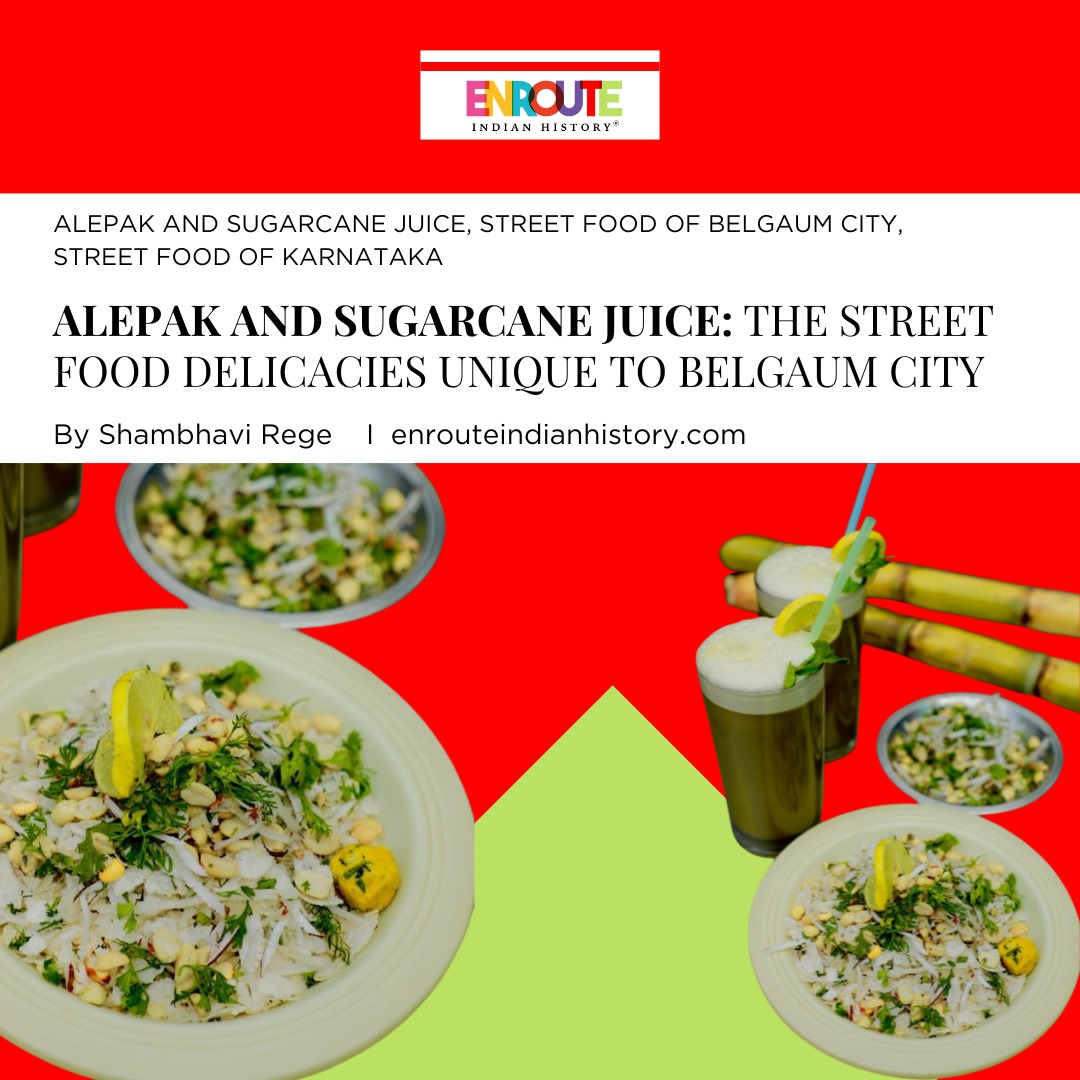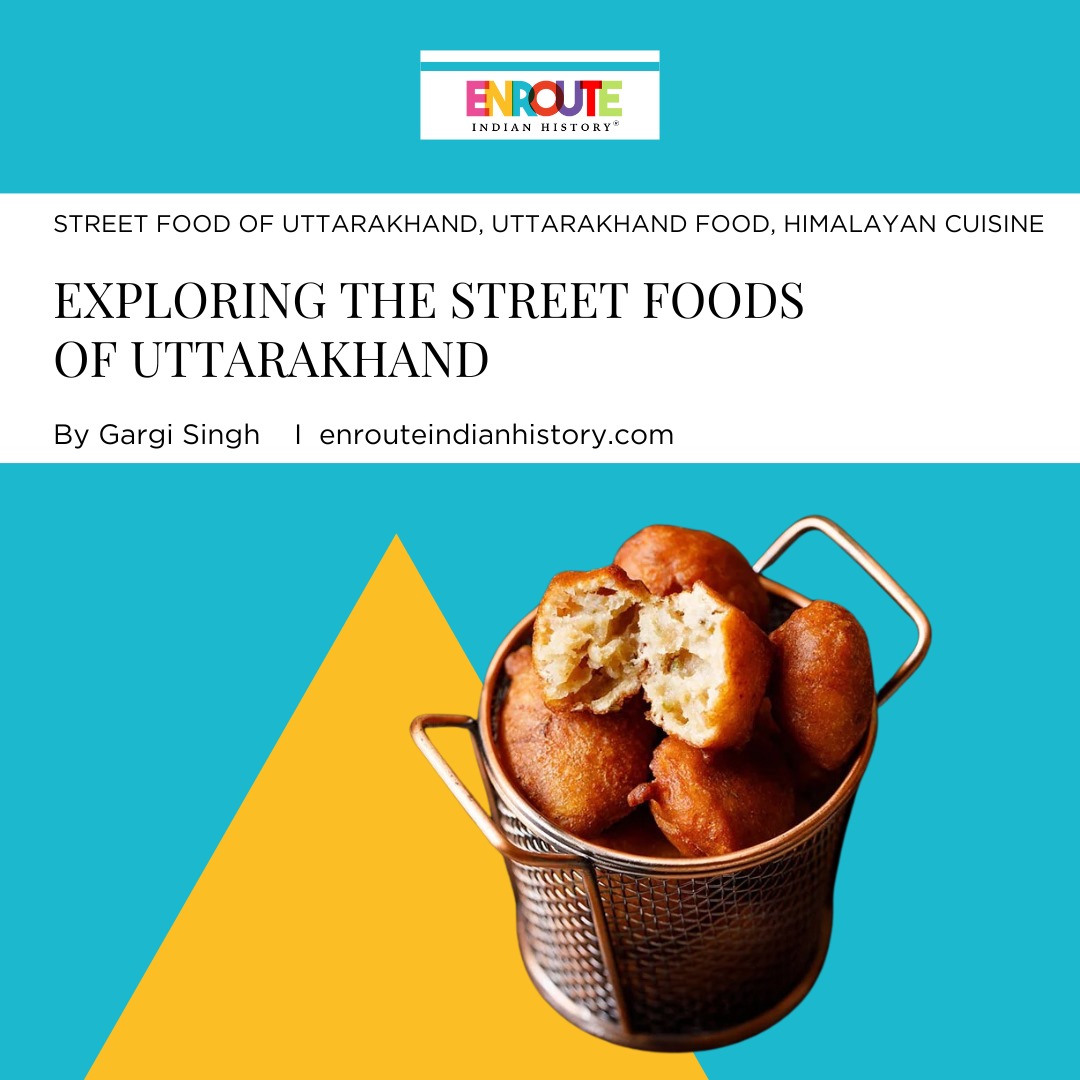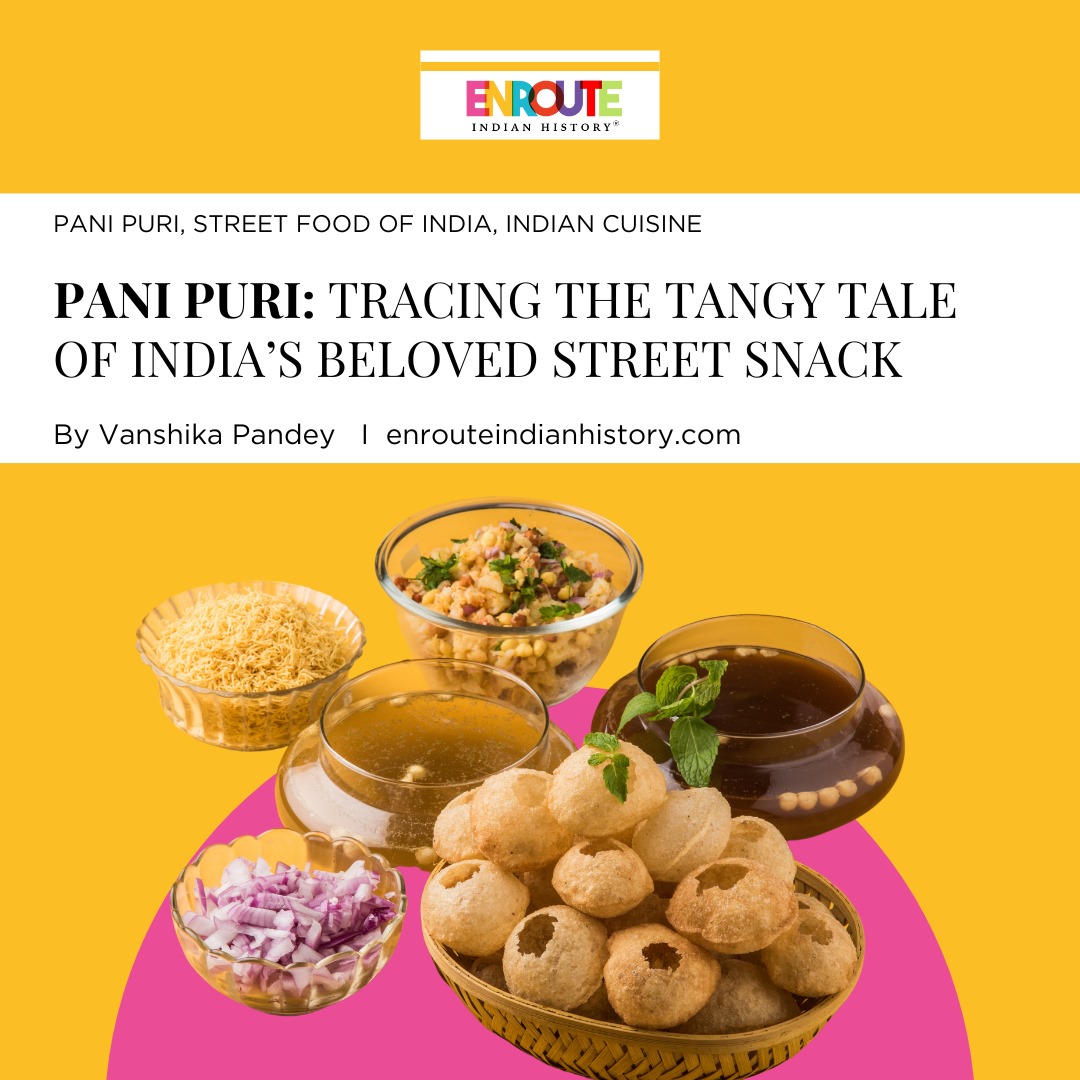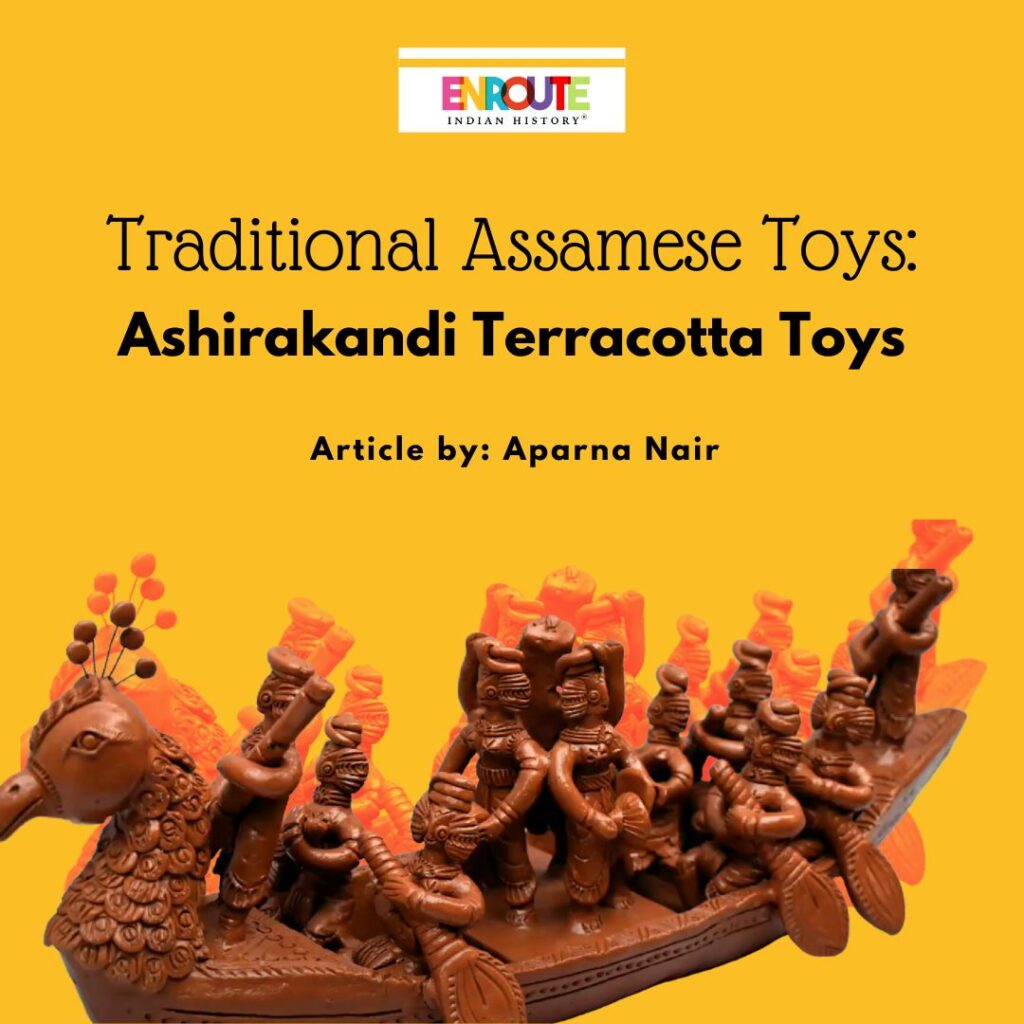
ASHARIKANDI PUTOLA
Toys have a significant role in human life. For children, it is a means to play with; for adults, it becomes a source of reliving memories; and for a region, it becomes an intrinsic part of their culture. In Indian history, the oldest toys could be traced back to the Indus Valley Civilisation where toy carts with wheels, whistles, birds, animals and discs have been found. These were made from terracotta (Latin, terra meaning ‘earth soil’; Italian, cotta meaning ‘statue’), which in simple terms means anything made from fired clay. But this century-old tradition continues even today, especially in a village in Assam called Asharikandi. Being the ‘Terracotta craft village’ of India, it is famous for crafting toys known as Asharikandi putola (toys).
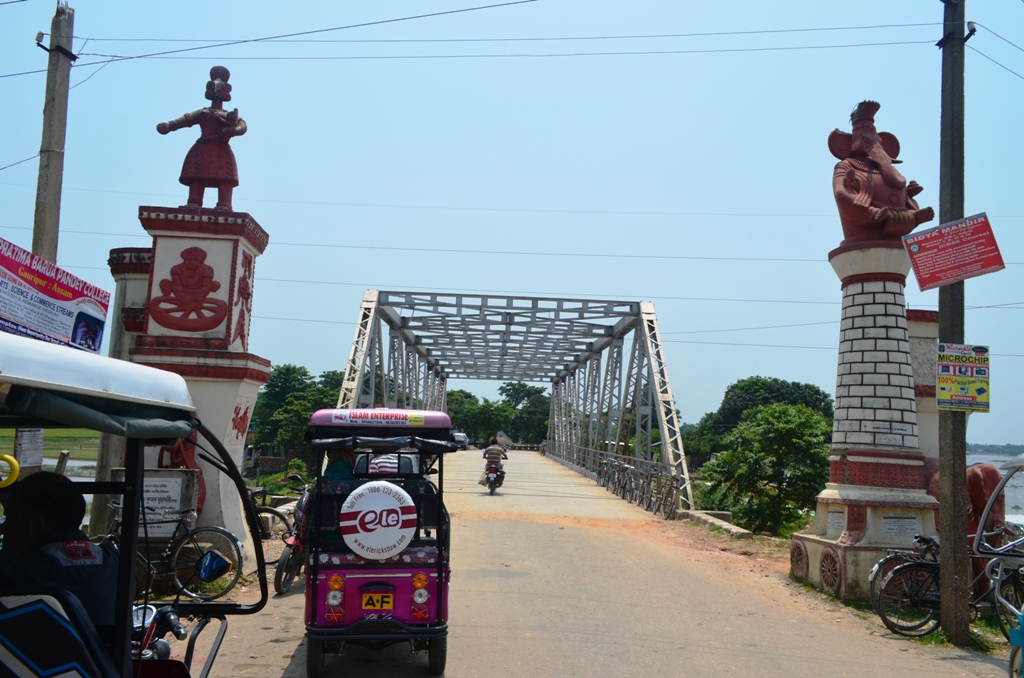 Entrance of Asharikandi village. This village derives its name from ‘Ashar’, the third month in the Assamese calendar, and ‘Kandi’, meaning shedding tears.
Entrance of Asharikandi village. This village derives its name from ‘Ashar’, the third month in the Assamese calendar, and ‘Kandi’, meaning shedding tears.
Picture Courtesy : Abhijna-eMuseum
Link : http://www.abhijna-emuseum.com/photo-gallery/asharikandi-potters-village/
Called pora Matirr Shilpa in Assamese, terracotta is used to craft putola by the Kumar and Hira families of the Namasudra community of Asharikandi for more than 100 years, most of them being erstwhile refugees from Bangladesh. They use a special type of soil known as Hiramati (clay soil), which is collected near river Silair and brought via boats. It is then soaked in water overnight and later particles and impurities are removed using a khota (a thin bamboo tool). The clay is then mixed with sand and caustic soda to avoid cracking and is given the desired shape using a kodal (spade), knife, brush, etc. Then it is put under the Sun to dry, and following which, kosh (colour) is used over the terracotta figure. The final step is firing the figures, covered in hey and clay, in a vatti (kiln) for about two days and after which the figures are cooled in an open space.
Such Indian handicrafts include dolls such as kings, queens, farmers, mothers and children, animals, or boats, fruits, balls, etc., for children’s enjoyment and decorating the house. But some of the most popular toys of Asharikandi are:
Hatima Putul
Perhaps the most unique and famous toy of the Assamese Asharikandi is the Hatima Putola, a figurine of a mother with elephant-like ears holding her child on her lap. While there is a child in one hand, there is a pradipdani (lampstand) on the other. It signifies that the artisans could not only produce dolls but also lamps. Also known as a mao-bachha putul (mother-child toy), it was crafted by Late Sarala Bala Devi. Her son, Dhirendra Nath Pal, describes the whole story:
‘Once, it came to his mind that they could make sophisticated items using terracotta for the educated classes. So his mother, Sarala Devi, crafted this. The royal family of Gauripus used to patronise terracotta toys, and Nilima Baruah, the sister of the renowned filmmaker Pramthesh Baruah, coined the name ‘hatima putul’ and showcased it around the world…As a result, in 1982, Sarala Devi was conferred the President Award for traditional terracotta craft. In 2005, he won the Bokul Bon Award from Assam Sahitya Sabha.’
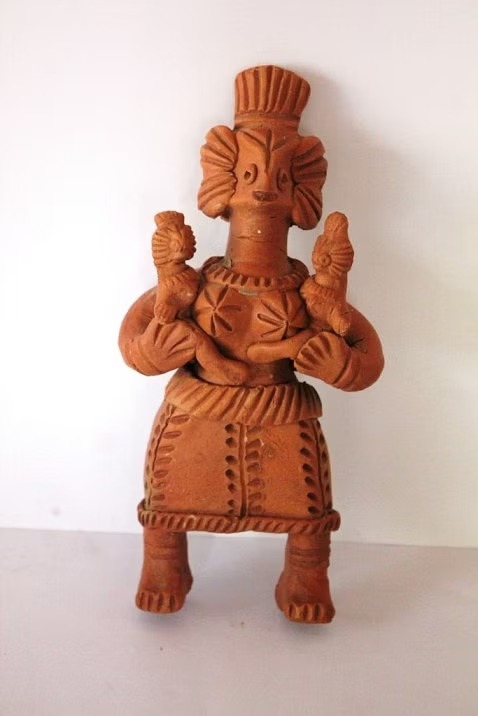
The popular terracotta mother-child toy, famous for its facial expression (Hatima putola much mandal)!
Picture Courtesy : The Better India
Bar-Kaina Putul and Other Figurines
Other popular putola includes bar-kaina (bride-groom) riding the elephant, men carrying a palanquin, and women playing the instruments and dancing. The difference in the male and female figurines can be identified based on their headdress, chest design and clothing. Male figures have a turban, flat chest and loincloth while the females have a headdress, highlighted breasts and skirt-like lower garment in this Indian handicraft.
Other Toys
Other traditional toys include animals such as horses, elephants, birds, and fish. Horse and elephant toys are very common because Assam has a history of using these animals for military, transportation, and ritual purposes by the Assamese kings and the Gauripur royal family. Now, they also create new kinds of toys such as a Greek soldier, a bicycle rider, mermaids, Bihu dancers, peasants, peacock boats, etc. They have even created a life-size female welcome doll as well as rhino figures, which is the pride of Assam.
CONCLUSION
Assam’s Asharikandi terracotta crafts have some resemblance to the Harappan terracotta culture, though terracotta toys are also crafted in other regions such as Tripura, where the artisans are known as Pal potters. Though it maintains its traditional features, it has tried to respond to present-day demands. For example, they have begun using plastic clay in toys and making much more than the traditional figures, such as Hindu, Buddhist, Christian, and other deities. This is because it is easy to handle and has more demand than traditional crafts. But since the process of making it is complex, children of the craftsmen do not generally wish to continue this tradition, creating a loss for the Indian handicraft industry. But the artistic features of these figures are distinct from any other, making it a fancy toy set as well as a living cultural heritage of India.
IMAGE REFERENCES
Image_1: https://www.innfinity.in/wp-content/uploads/2023/04/asharikandi.png.
Image_2: Bhuyan, https://www.youtube.com/watch?v=RAryIVNcJBY&ab_channel=NECreative.
Image_3: https://www.indiaheritagewalks.org/sites/default/files/inline-images/Hatima-Putul.jpg.
Images 4-8: Bhuyan, https://www.youtube.com/watch?v=RAryIVNcJBY&ab_channel=NECreative.
Image_9: http://www.abhijna-emuseum.com/wp-content/uploads/2017/10/IMG_2519-1-230×200.jpg.
Image_10: https://www.abhijna-emuseum.com/wp-content/uploads/2017/10/DSC_0324.jpg
REFERENCES
Bhowmik, Rajesh. “Existence of Potteries in North-Eastern Region of India.” Department of Fine Arts, Tripura University, 2021.
Bhuyan, Paresh. “Terracotta Crafts of Asharikandi, Assam, India.” NE Creative, June 2021, https://www.youtube.com/watch?v=RAryIVNcJBY&ab_channel=NECreative.
Dutta, Gaurav. “MARKETING CHALLENGES FOR MSMES IN INDIA: A Study on the Terracotta and Pottery Craft Cluster of Asharikandi.” Indian Stream Research Journal, Vol. 4 (5), June 2014, pp. 1-6.
Sangtani, Deepesh., Abdullah, S.M. Hamza. “Investigating Premature Urbanization: Vernacular and Occupation-based Development Model at Asharikandi.” International Journal of Science, Engineering and Management, Vol. 9 (2), February 2022, pp. 33-43.
Hoque, Mohibul. “A Study on the Socio-Cultural Significance of the Terracotta Craft of Asharikandi.” International Research Journal of Interdisciplinary % Multidisciplinary Studies, Vol. 2 (XI), December 2016, pp. 139-147.
- May 8, 2024
- 8 Min Read



